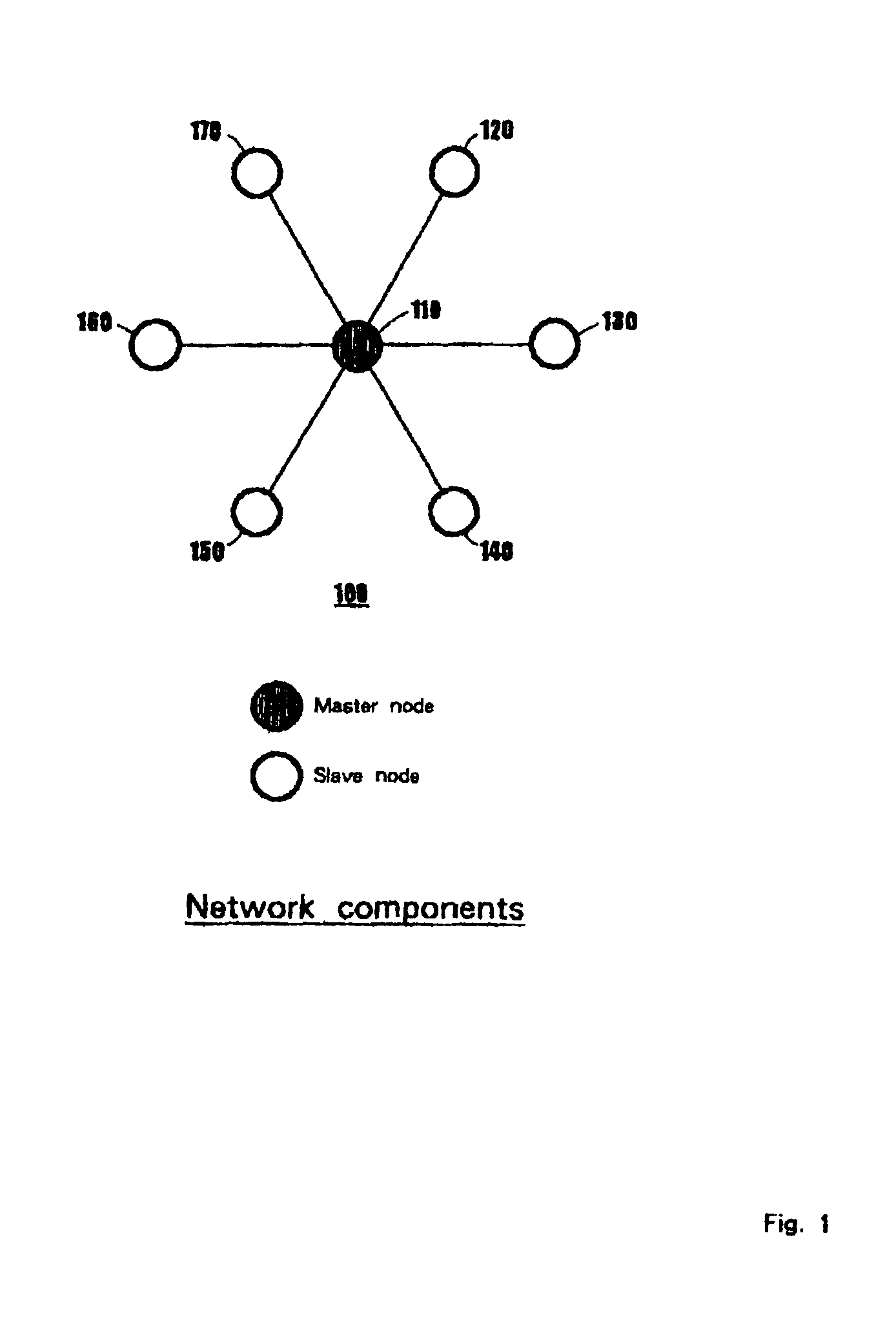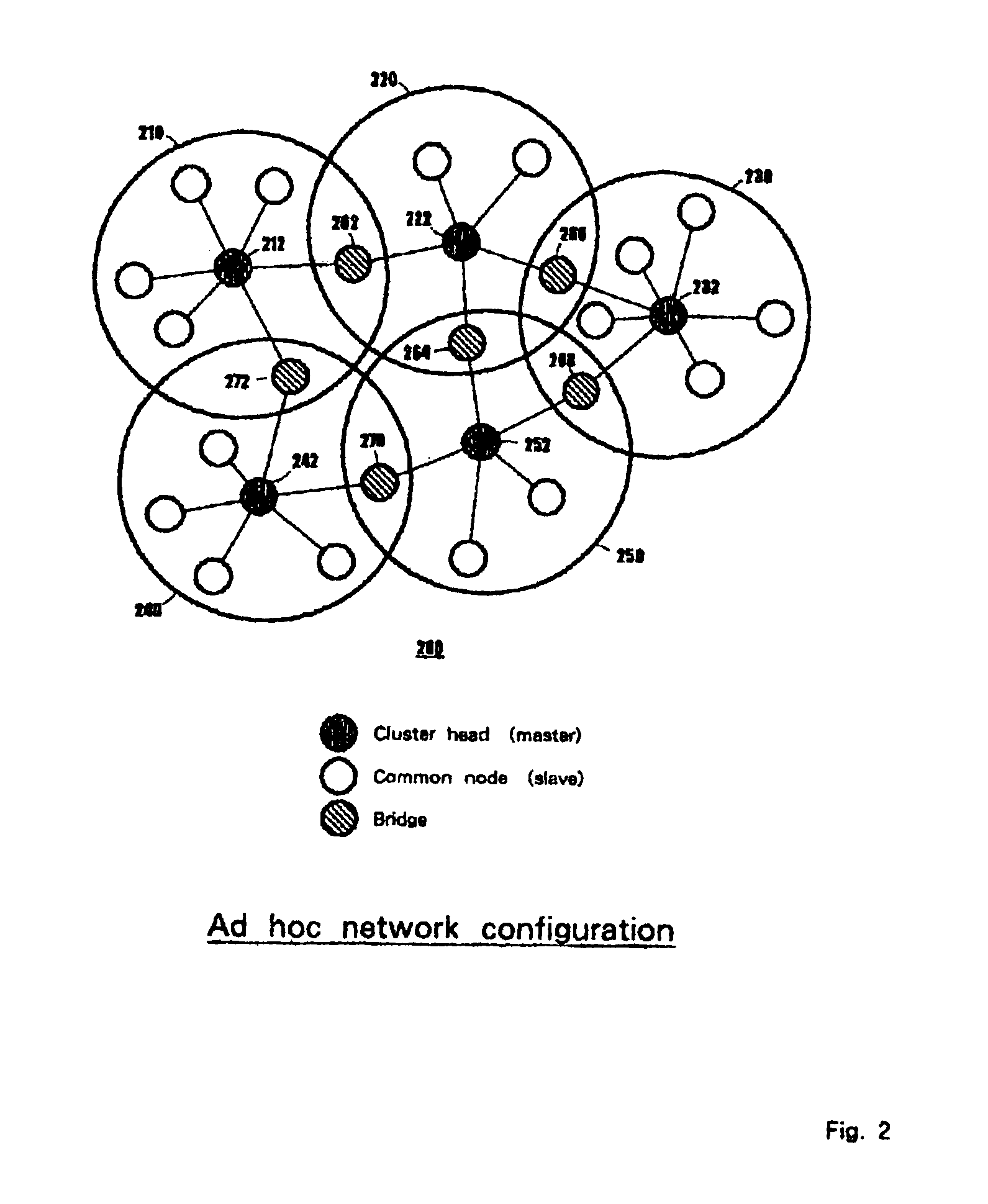Method and apparatus for searching for radio station for wireless ad hoc communication network
a wireless ad hoc communication and radio station technology, applied in the direction of broadcasting with distribution, transmission monitoring, assess restriction, etc., can solve the problems of substantial reduction of data rate (data transfer speed), and increasing overhead for these operations. , to achieve the effect of reducing the overall overhead of the ad hoc communication network and reducing the average search tim
- Summary
- Abstract
- Description
- Claims
- Application Information
AI Technical Summary
Benefits of technology
Problems solved by technology
Method used
Image
Examples
Embodiment Construction
[0046]There are at least two cases wherein new connections are made to an ad hoc communication network. One is where a new node is acquired by a conventional network area (FIG. 3), and the other is when a plurality of separate networks approach a communication enabling zone (FIG. 4).
[0047]Initially, in FIG. 3, four nodes, i.e., node 1 (312), node 2 (314), node 3 (316) and node 4 (3.18), constitute a network A (310).
[0048]When a new node 5 (320) plans to join the network A (310′) (FIG. 3), this node transmits a radio signal to notify the other nodes of its presence in their vicinity. The network A (310′), however, regards this radio signal simply as interference propagated by a source outside a logical channel.
[0049]Further, when networks A (410) and B (420) are moving so that they are separately approaching a communication enabling zone (FIG. 4), a signal transmitted by the network A (410′) is regarded as an interference signal by the network B (420′), and conversely, a signal trans...
PUM
 Login to View More
Login to View More Abstract
Description
Claims
Application Information
 Login to View More
Login to View More - R&D
- Intellectual Property
- Life Sciences
- Materials
- Tech Scout
- Unparalleled Data Quality
- Higher Quality Content
- 60% Fewer Hallucinations
Browse by: Latest US Patents, China's latest patents, Technical Efficacy Thesaurus, Application Domain, Technology Topic, Popular Technical Reports.
© 2025 PatSnap. All rights reserved.Legal|Privacy policy|Modern Slavery Act Transparency Statement|Sitemap|About US| Contact US: help@patsnap.com



